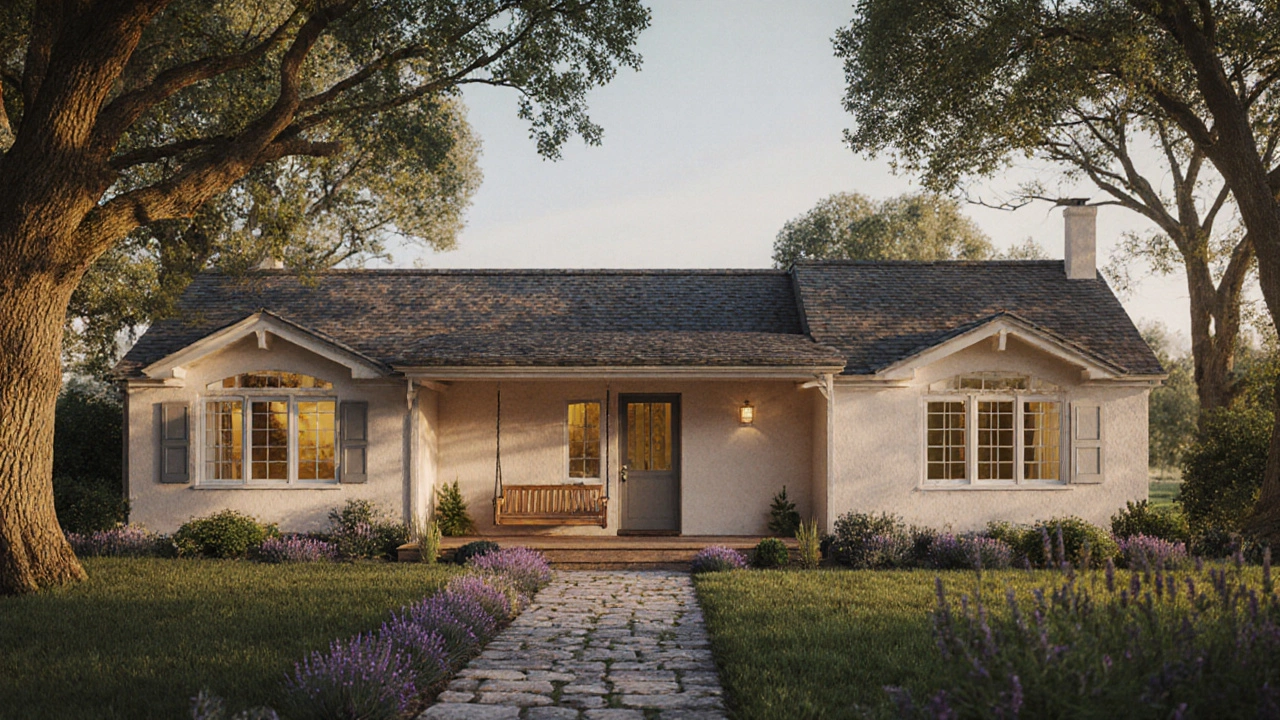Discover the ten must‑have features that make a ranch‑style house iconic, from its single‑story layout to large windows and indoor‑outdoor flow.
Low-Pitched Roof: What It Is and Why It Works
Ever wondered why some houses seem to have a roof that barely climbs? That’s a low-pitched roof – a roof with a gentle slope, usually under 30 degrees. It looks simple, but the shape offers real benefits for homeowners and designers.
The shallow angle means you can use cheaper framing, and you get more headroom inside the attic. It also blends nicely with many architectural styles, from classic Georgian homes to modern minimalist houses.
Key Advantages of a Low-Pitched Roof
First, construction costs drop because you need fewer rafters and less lumber. Second, the roof’s broad surface creates a sleek, horizontal line that can make a building feel wider and more grounded. Third, low-pitched roofs are easier to waterproof when you use the right membranes – fewer seams mean fewer places for leaks.
Another perk is energy efficiency. The large overhangs that often accompany a shallow roof provide shade in summer while letting low-angle winter sun warm the interior. Pair the roof with good insulation, and you’ll see lower heating and cooling bills.
Design Tips for Using Low-Pitched Roofs
Want to add a low-pitched roof to your project? Start by checking local building codes – some areas require a minimum slope for snow runoff. If you’re in a snowy region, consider a slightly steeper pitch or a metal roof that sheds snow easily.
Choose materials that hide the roof’s flatness. Concrete tiles, clay tiles, or standing‑seam metal panels give the roof a clean look without drawing attention to the low angle. Dark colors absorb heat, so lighter shades work better in hot climates.
Don’t forget the details. A simple fascia board and a well‑crafted soffit can turn a plain roof into a finished design element. Adding dormers or skylights breaks up the large plane and adds character.
Low-pitched roofs also play well with other architectural features. Pair them with tall windows, columned porches, or brick façades to keep the overall proportion balanced. Look at Georgian houses – their flat roofs sit under a strong cornice, giving a refined, orderly feel.
Finally, maintenance matters. Because water sits longer on a shallow roof, you’ll need regular inspections for pooling. Clean gutters often, and consider a roof coating that repels water.
Whether you’re renovating a historic home or designing a sleek new build, a low-pitched roof can save you money, improve energy use, and give your project a calm, understated style. Start with these basics, check the local rules, pick the right material, and you’ll have a roof that works as well as it looks.

